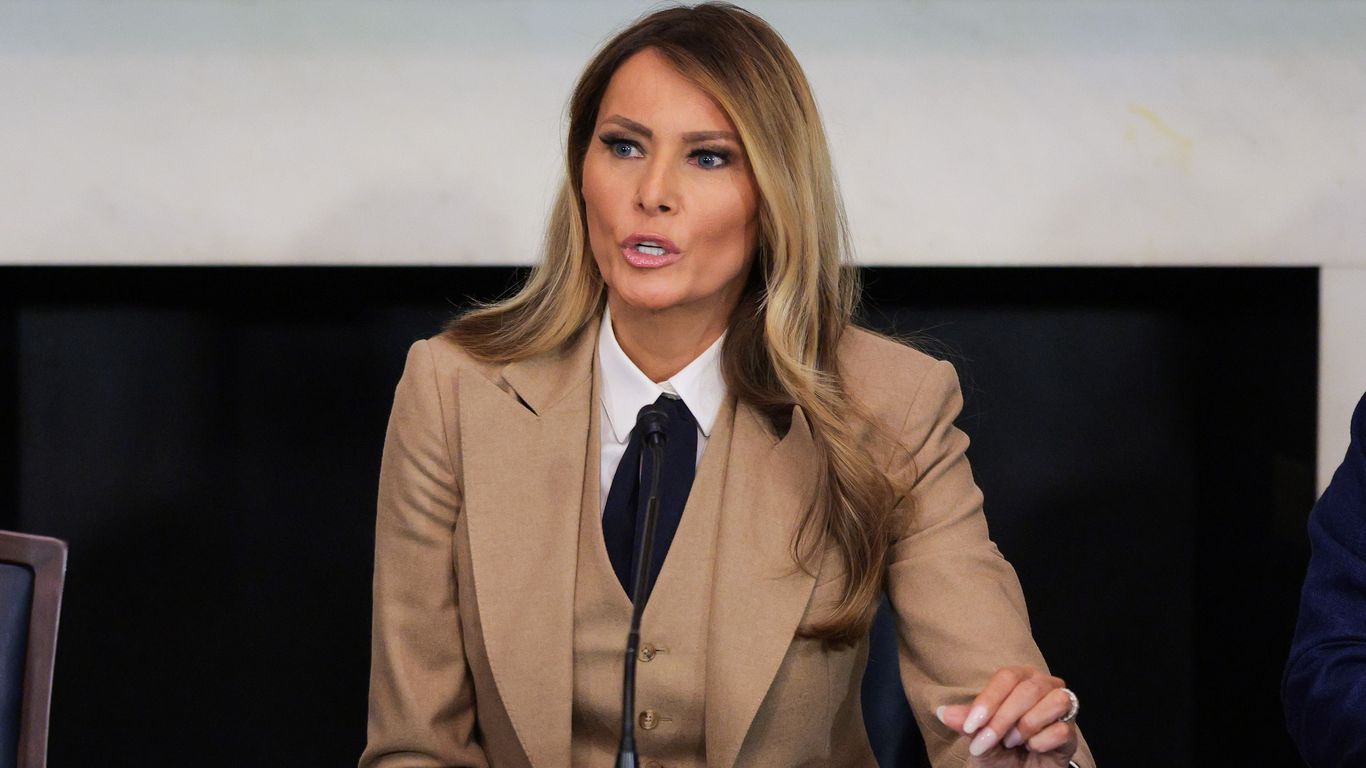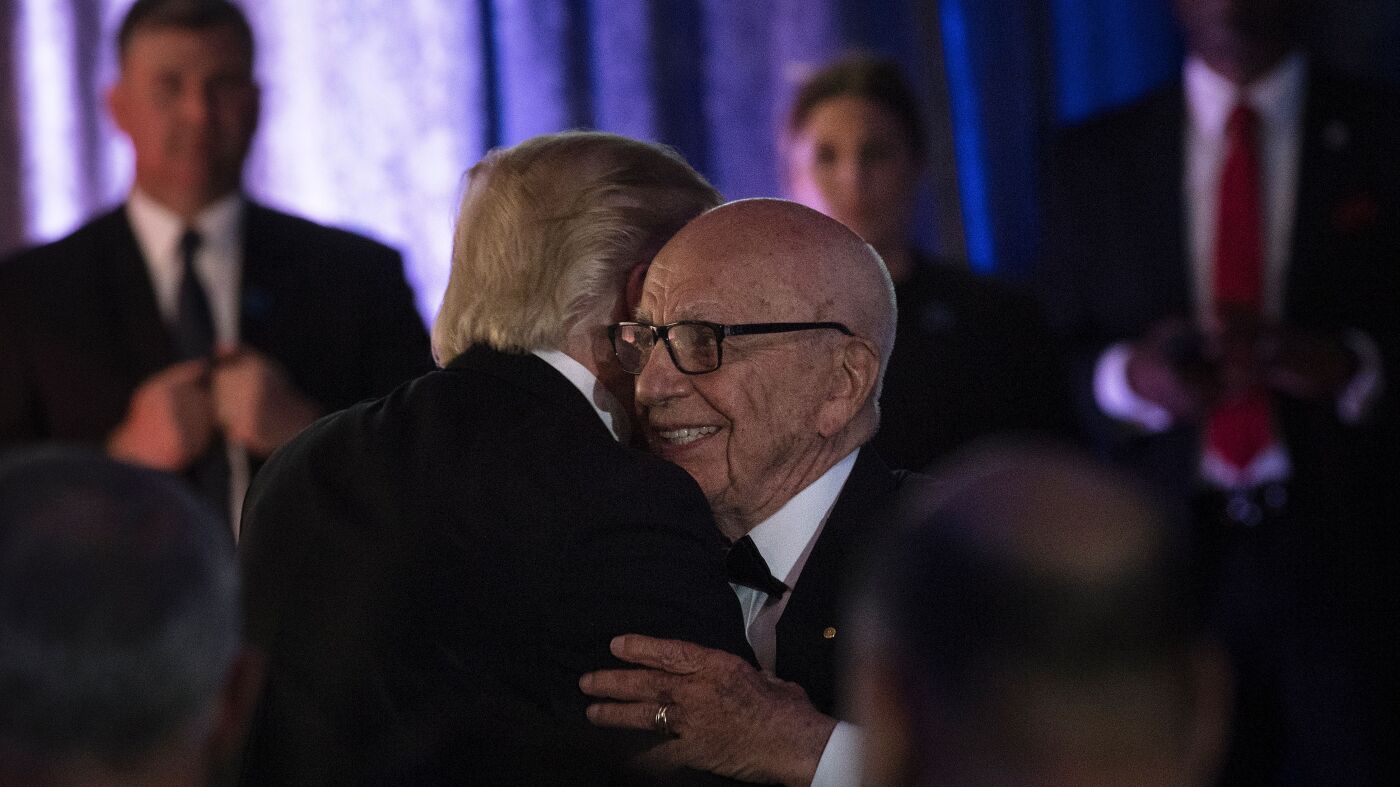The Impact of Trump's Opposition to Mail-In Voting

Introduction
President Trump recently announced that he will "lead a movement" to eliminate mail-in voting in the upcoming election. This statement has caused a stir among voters and election officials, as the use of mail-in ballots has become a hot topic in light of the ongoing COVID-19 pandemic. While Trump has expressed concerns over potential voter fraud through mail-in voting, the Constitution gives states the authority to regulate how elections are run, making it unlikely for Trump to change voting rules unilaterally.
Key Details
Mail-in voting has been a longstanding practice in the United States, with some states utilizing it exclusively. However, due to the pandemic, many states have expanded mail-in voting options to ensure the safety of voters. This has led to a sharp political divide, with Democrats supporting the expansion and Republicans, including Trump, voicing concerns about potential fraud. Despite this, election officials have emphasized the security measures in place to prevent fraud, such as signature verification and ballot tracking.
Impact
The controversy surrounding mail-in voting has highlighted the importance of state authority in regulating elections. The ongoing debate has also brought to light the need for a secure and accessible voting process for all Americans. As the election approaches, it will be crucial for voters to stay informed and exercise their right to vote, whether through mail-in ballots or in-person. Ultimately, it
About the People Mentioned
Donald Trump
Donald John Trump, born June 14, 1946, in Queens, New York, is an American businessman, media personality, and politician. He graduated from the University of Pennsylvania’s Wharton School in 1968 with a degree in economics. In 1971, he took over his family’s real estate business, renaming it the Trump Organization, through which he expanded into building and managing skyscrapers, hotels, casinos, and golf courses. Trump gained widespread fame as the host of the reality TV show *The Apprentice* from 2004 to 2015, which helped establish his public persona as a successful entrepreneur. Trump entered politics as a Republican and was elected the 45th president of the United States, serving from 2017 to 2021. His presidency was marked by significant policy actions including tax cuts, deregulation, the appointment of three Supreme Court justices, renegotiation of trade agreements (notably replacing NAFTA with the USMCA), and a focus on immigration control including border wall expansion. He withdrew the U.S. from international agreements such as the Paris Climate Accord and the Iran nuclear deal, and engaged in a trade war with China. His administration’s response to the COVID-19 pandemic was criticized for downplaying the virus’s severity. Trump was impeached twice by the House of Representatives—first in 2019 for abuse of power and obstruction, and again in 2021 for incitement of insurrection—but was acquitted by the Senate both times. After losing the 2020 election to Joe Biden, Trump challenged the results, culminating in the January 6, 2021, Capitol riot. He remains a central figure in American politics, having won the 2024 presidential election and returned as the 47th president in 2025, continuing to promote policies aimed at economic growth, border security, and military strength[1][2][3][4].
About the Organizations Mentioned
Democrats
The **Democratic Party** is one of the two major political parties in the United States, widely recognized as a liberal and progressive organization that advocates for social and economic equality, civil rights, environmental protection, and worker rights. It generally supports stronger government intervention in the economy and social welfare programs such as Medicaid and food aid, funded through progressive taxation[1][3]. Founded in 1848 with the creation of the Democratic National Committee (DNC), it is the oldest continuing political party and party committee in the U.S.[2]. The **Democratic National Committee (DNC)** is the central governing body, overseeing campaign activities, party organization, and the Democratic National Convention. It coordinates efforts across all 57 states and territories, supporting local and state party organizations to elect Democrats at every level of government[1][2]. The current DNC chair as of 2025 is Ken Martin[1][2]. Historically, the party has undergone significant transformations, evolving from its roots as the Jacksonian Party to its current identity emphasizing progressive policies and social justice[3]. The party is known for using the color blue as its symbol since the 2000 presidential election[3]. It has pioneered civil rights legislation and expanded social safety nets, shaping much of modern American social policy. In recent years, the Democratic Party has focused on renewal efforts to address changing public expectations and declining support among certain voter groups. This involves reevaluating policies and strategies to build a sustainable majority amid rapid social and technological change[4]. It also actively fights to protect democratic institutions and voting rights, coordinating a broad coalition of organizations to defend against anti-democratic threats[6]. Currently, the party continues to mobilize grassroots voters and organize campaigns across all levels, aiming to secure electoral victories and promote a fairer, more equal future for Americans—efforts often highlighted in business and technology news for their impact on policy and governance[5].
Republicans
The **Republican Party** is a major political organization in the United States, founded in 1854 in Jackson, Michigan, primarily by anti-slavery activists opposing the expansion of slavery into new U.S. territories[1][2]. Its origins lie in the political turmoil following the Kansas-Nebraska Act, which ignited sectional conflicts. The party emerged from a coalition of former Whigs, Free Soil Democrats, and abolitionists united by the ideology of "Free Soil, Free Labor, Free Men," advocating against slavery, supporting free market labor, and promoting modern economic development including railroads, banking, and high tariffs[4][6]. Key early achievements include the nomination and election of Abraham Lincoln as the first Republican president in 1860, whose leadership during the Civil War was pivotal in preserving the Union and abolishing slavery. Lincoln’s Emancipation Proclamation and the party’s role in passing the 13th, 14th, and 15th Amendments were landmark contributions to civil rights and the redefinition of American freedom[2][5][6]. The party dominated national politics from the Civil War era until the Great Depression, during which it was the principal advocate for industrial and business interests, protective tariffs, and national banking[2][5]. Throughout its history, the Republican Party has undergone ideological shifts but has consistently emphasized economic modernization and conservative fiscal policies, aligning with business and technological advancement. The early 20th century saw figures like Theodore Roosevelt promote progressive reforms, while later eras emphasized free enterprise and innovation to drive growth[2][4]. Currently, the Republican Party remains a central force in American politics, influencing policies related to business, technology, and governance. Its historical legacy as the party of Lincoln and abolition continues to be a defining aspect, shaping its identity and appeal, especially in debates over civil rights, economic policy, and national unity[5][6]. The party’s evolution reflects ongoing tensions between tradition and modernization within the U.S. political landscap
Constitution
The term "Constitution" typically refers to foundational documents that outline the principles, structure, and powers of a government or organization. However, in the context of business and technology, it might relate to the foundational documents of a company or organization, outlining its purpose, structure, and governance. Here's a summary focusing on the U.S. Constitution as a model for organizational structure and governance: ## Organization Overview The U.S. Constitution serves as a model for organizational structure and governance. It outlines the framework for the federal government, divided into three branches: legislative, executive, and judicial. This separation of powers ensures checks and balances, preventing any single branch from becoming too powerful. ## History Drafted in 1787 and ratified in 1788, the Constitution has been amended 27 times since its inception. The first ten amendments, known as the Bill of Rights, were ratified in 1791 and provide fundamental protections for individual liberties. ## Key Achievements - **Establishment of a Federal System**: The Constitution established a federal system of government, ensuring that power is distributed between the federal government and the states. - **Separation of Powers**: It created a system of checks and balances among the legislative, executive, and judicial branches, preventing any one branch from dominating the others. - **Amendments**: Over time, amendments have expanded civil rights, ensured voting rights, and modified government processes. ## Current Status Today, the U.S. Constitution remains the supreme law of the land, providing the foundation for all U.S. laws and government actions. Its principles of federalism and separation of powers continue to influence governance worldwide. ## Notable Aspects - **Influence on Governance**: The Constitution's structure has inspired similar systems in other countries. - **Adaptability**: Despite being over two centuries old, it continues to evolve through amendments, reflecting changing societal values and legal interpretations. - **Symbolic Role**: It serves as a symbol of national unity and democratic
Election Officials
Election officials are not a single organization but rather a group of individuals and entities responsible for administering elections across the United States. These officials play a crucial role in ensuring the integrity and fairness of the electoral process. Here is a comprehensive overview of their role, history, achievements, current status, and notable aspects: ## Role and Responsibilities Election officials are responsible for overseeing all aspects of elections, including voter registration, polling place management, ballot distribution, and ensuring the accuracy of election results. They work at various levels, from local to state, and include roles such as county clerks, secretaries of state, and election commissioners. These officials undergo extensive training to ensure compliance with laws and regulations[2][7]. ## History The role of election officials has evolved significantly over the years, with major reforms following the Help America Vote Act of 2002. This act created the U.S. Election Assistance Commission (EAC), which supports election officials by providing resources and guidance to improve election administration[4][6]. ## Key Achievements Election officials have made significant strides in enhancing election security and accessibility. They have implemented measures to protect against cyber threats and ensure that voting systems are accurate and reliable. Additionally, they have expanded early voting options and improved voter registration processes to increase participation[4][7]. ## Current Status Currently, election officials face challenges such as misinformation, voter suppression attempts, and the need for ongoing technological updates to maintain election integrity. Despite these challenges, they continue to work diligently to ensure fair and secure elections. In many states, laws have been enacted to protect these officials from harassment and intimidation[2][7]. ## Notable Aspects Notable organizations supporting election officials include the National Association of Election Officials and the U.S. Election Assistance Commission. These organizations provide training, research, and resources to enhance election administration. The role of election officials is critical to maintaining public trust in the democratic process[1][4].








